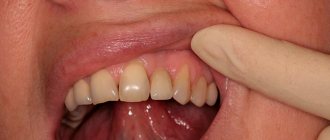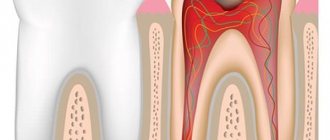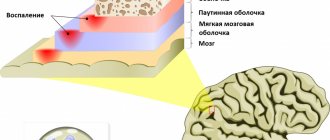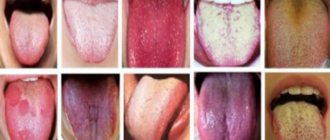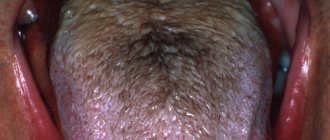Sometimes we experience a special kind of discomfort - it seems that either our head or our eyes hurt. This pain occurs in the sinus area or at the back of the eye. Sometimes it is pulsating, sometimes it is constant. This condition frightens us very much and we want to know what causes this pain? What can be done to alleviate it? Could there be something wrong with my vision?
Let's first answer the last question.
Scientists from the American Academy of Ophthalmology defined "eye pain" as "physical discomfort caused by an eye or other disease." But scientists emphasize that “the location of the pain does not necessarily indicate the cause of the pain.”
In most cases, the cause of a headache felt in the eyes may be hidden in a completely different place. We feel pain in this particular location because of a network of interconnected sensory nerves that penetrate all tissues of the body.
“Almost every pain-sensitive structure in the head transmits the sensation of pain to the eye area,” says Dr. Mark W. Green, MD, professor of neurology at the Icahn School of Medicine at Mount Sinai Hospital in New York City. “Just because the eye hurts does not mean that the problem is in the eye itself. In fact, this happens quite rarely."
Green advises to remember one useful rule: if the white part of the eye (sclera) is not red, and there are no complaints about vision - a blurred or distorted picture, it is very unlikely that the headache is associated with the eyes themselves.
Symptoms of pain under the eye
Note! Painful sensations in the infraorbital area are often perceived as pain in the bone, but in most cases (excluding traumatic ones) soft tissues hurt.
Depending on the disease, tingling may vary in nature and intensity. Most often, such sensations are caused by the development of sinusitis in the acute stage.
In this case, the aches are felt even without pressure, and symptoms such as:
Where is an MRI of the sinuses done?
Targeted scanning is necessary if the degree of complexity of the disease cannot be determined by other instrumental methods, if the drug treatment did not help, and as monitoring of the instrumental treatment performed. Screening is carried out in specialized tomography centers with the necessary equipment.
A complete list of medical institutions in the city can be found on the unified registration service of St. Petersburg. To do this, select a service on the top panel of the page, the type of study and study the list of clinics distributed in the regions of the Northern capital. Mark the best offers, sign up for diagnostics immediately directly through the portal and receive a guaranteed discount. The telephone number of the consulting service is also posted on each page of the service.
Possible reasons
Tingling under the eye may be a symptom of one of the following conditions::
- Sinusitis . The pathology is an inflammation of the nasal sinuses, which communicate with the lacrimal canals. With this disease, the maxillary sinuses, which are located under the eye sockets, become clogged with purulent discharge. The pathology in its advanced form can progress to the chronic stage, and inflammatory processes can spread to the upper respiratory tract. Treatment in this case is carried out by an otolaryngologist, who prescribes appropriate anti-inflammatory and, if necessary, antibacterial drugs.
- Osteomyelitis . A purulent-necrotic process in the bones, which can develop against the background of complications of dental diseases, when infectious processes from the teeth of the upper jaw spread to the infraorbital bones. Treatment consists of taking immunostimulating and antibacterial drugs, vitamins, and in severe cases, blood plasma transfusion to detoxify the body.
- Mechanical damage to the periocular area. Painful sensations in such cases require, first of all, symptomatic treatment and the use of painkillers. And with concomitant damage to the eyeball and penetrating wounds, antibacterial treatment and surgical intervention are necessary.
- Neuralgic pathologies. Such disorders are usually accompanied by a complex of symptoms, including disturbances in facial expressions, numbness of the facial, hypoglossal and pharyngeal nerves. Often the patient experiences tingling sensations in the temples, shoulders or neck.
- Disturbances in the activity of the vascular system of the organs of vision . In such cases, the patient may feel pain in the bone under the eye, but this syndrome only affects the blood vessels and soft tissues.
Only a specialist can determine what exactly causes such a symptom after conducting an appropriate examination.
Treatment is determined solely by the origin of the pathology and its severity.
How are sinuses treated?
The use of traditional methods to restore breathing and other methods of self-medication is not recommended unless the manipulations are prescribed by a doctor.
At the first signs of the disease, you can use the usual nasal medications to alleviate the symptoms, but only until, in consultation with an otolaryngologist, specific targeted drugs that affect the root cause of the pathology are prescribed. In case of a complex anomaly, hardware diagnostics is first performed using MRI. In complex therapy the following are used:
- intensive nasal rinsing sprays;
- antibacterial drugs (after identifying a pathogenic bacterium, virus or fungus);
- local vasoconstrictors;
- surgical intervention for congenital or acquired anomalies of the upper respiratory tract.
Instrumental endoscopic treatment is used in cases where traditional therapy has proven ineffective. To determine the feasibility of surgery, it is necessary to undergo an MRI in advance. During surgical treatment, mechanical expansion of the cavities is carried out, which helps the purulent substrate to naturally exit the respiratory canals. During the manipulation, the patient does not experience discomfort, since the procedure is performed using anesthesia.
Diagnostic methods
It is worth noting! The exact cause of pain can only be determined after a detailed examination, including:
- donating blood for general and biochemical tests;
- rhinoscopy (examination of the nasal cavity);
- nasal swab to analyze the discharge for the presence of pathogenic microorganisms;
- CT scan;
- radiography of the upper jaw area;
- dacryocystography (examination of the tear ducts using x-rays);
- puncture of the maxillary sinus (if sinusitis is suspected).
Treatment
Elimination of pain in the corners of the eyes is possible only after identifying the cause that caused it. Only a specialist can help with this during a diagnostic examination of the organ of vision. To relieve discomfort, you can independently apply moisturizing drops and cold compresses to the eye area.
However, it is necessary to remember that you should not delay your visit to the doctor, and pain in the eyes, accompanied by decreased visual acuity, redness of the eyes and photophobia, require immediate attention.
In the medical department, everyone can undergo examination using the most modern diagnostic equipment, and based on the results, receive advice from a highly qualified specialist. The clinic provides consultations to children from 4 years old. We are open seven days a week and work daily from 9 a.m. to 9 p.m. Our specialists will help identify the cause of vision loss and provide competent treatment of identified pathologies.
You can find out the cost of a particular procedure or make an appointment at the Moscow Eye Clinic by phone (daily from 9:00 to 21:00, free for mobile phones and regions of the Russian Federation) or using the online registration form.
Yakovleva Yulia Valerievna
Treatment of headaches and facial pain
The treatment regimen for headaches and pain in the face is selected individually. It will include measures to eliminate the underlying disease, as well as to relieve symptoms. Based on the diagnostic results, the doctor may prescribe the following methods:
- drug treatment - may include anti-inflammatory and painkillers, antibiotics, drugs to improve cerebral circulation;
- physiotherapy – carried out to stimulate blood circulation and innervation in the face and head;
- diet for blood vessels - includes simple foods, with a minimum amount of fried foods, animal fats, fast food and spices;
- surgical intervention - most often prescribed for mechanical compression of nerves and blood vessels, in the presence of neoplasms and dental diseases, as well as for clearing the contents of the paranasal sinuses.
Doctors at the Clinical Institute of the Brain will select appropriate treatment tactics based on the results of a general examination. For most patients, it is enough to take medications, follow a diet and adjust their daily routine to improve their health. However, for some diseases surgical intervention is indicated.
Prevention
Prevention involves compliance with hygiene standards , which will eliminate the risk of infections in the eyes.
It is necessary to keep your hands clean (especially after going outside or visiting public places), but even with clean hands you should not rub your eyes too much.
You should also follow a sleep schedule, avoid getting too cold, and include more healthy foods in your diet (including fruits and vegetables).
This is necessary to maintain immunity at a high level and will avoid the development of diseases even when pathogenic microflora enters the body.
Types of trigeminal neuralgia
Trigeminal neuralgia is divided into two types. The first, the so-called true trigeminal neuralgia, is a holistic disease caused in most cases by compression of the nerve or disruption of the blood supply. The second type - secondary trigeminal neuralgia - is a symptom of a general disease of the body. It could be a tumor or a serious infection.
In most cases, doctors diagnose inflammation of one of the processes of the trigeminal nerve, but in some situations inflammation of two or three processes occurs at once. Inflammation can affect either one side of the face or both, and in different combinations.
Useful video
First aid for eye injury. Algorithm of actions before contacting a specialist.
Author's rating
Author of the article
Alexandrova O.M.
Articles written
2100
about the author
Was the article helpful?
Rate the material on a five-point scale!
( 2 ratings, average: 5.00 out of 5)
If you have any questions or want to share your opinion or experience, write a comment below.
Symptoms
With the development of edema, the integrity of the nasal mucosa is always compromised, resulting in the area of damage expanding over time.
Keep in mind! As a result, swelling spreads to the periocular area and appears in the form of reddened swelling.
The following symptoms are typical for edema that occurs precisely because of sinusitis :
- rapid breathing due to partial narrowing of the airways;
- redness of the lower (less often upper) eyelids ;
- change in voice timbre;
- swelling of the eyelids and parts of the cheeks directly under the eyes ;
- headache;
- accumulation of pus in the maxillary sinuses , which is periodically discharged through the nose.
The severity of the pathology can be judged by the swelling.
The stronger these symptoms are, the further the disease progresses.
Therefore, if symptoms increase and home methods at hand are ineffective, you should immediately consult a doctor.
Root Causes
When the bone under the eye hurts, it is necessary to look for the root causes of fluid stagnation in the paranasal area and nasal cavity.
It could be:
- Allergic reaction to dust, wool, chemical components, fluff and nutritional products containing irritants.
- Presence of sinus deformation due to trauma. In addition, the cause may be a curvature of the nasal septum along with a displacement of the jaw, an abnormal structure of the shells and improperly fused bones of the skull.
- Viruses that have entered the sinuses. They can provoke fluid secretion along with narrowing of the canals and swelling. If bacteria are also added to them, then improper therapy causes resistance to antibiotic drugs.
- The appearance of fungi settling in the sinuses, which cause mycosis. The severity of this disease depends on the type and aggressiveness of the fungus.
- Cold air. It can constrict blood vessels, and oxygen will not flow into the orbit of the eye in sufficient quantities, which sometimes provokes the feeling that the facial bone under the eyes hurts. In addition, the cause of discomfort is dust and air pollution.
- With vitamin deficiency, the immune system suffers. A weakened human body cannot resist attacks from pathogenic microorganisms, which is why a runny nose often develops, and then its complications.
- Hypothermia. With it, the body's protective functions weaken. The respiratory organs are the first to suffer infectious blows. If a person can hardly tolerate the cold, then in the autumn and winter he will suffer from rhinitis.
Symptoms and treatment of sinusitis in children and adults are interrelated.
Next, we will take a closer look at the pathologies occurring in the paranasal sinuses, which are classified as inflammatory processes.
How does inflammation of the trigeminal nerve manifest?
The main symptom of inflammation of the trigeminal nerve is severe pain that occurs in the facial part. The pain really has a powerful force and shooting character, so it is very difficult for the patient to calmly endure painful attacks. The pain intensifies when performing the slightest actions with the facial muscles and jaws - yawning, chewing, laughing, and performing daily oral hygiene. At the same time, the sensitivity of the skin on the inflamed side of the face decreases.
The next painful attack is accompanied by a rapid dilation of the patient’s pupils and the same rapid contraction of facial muscles. Increased tear production may begin.
Pain with trigeminal neuralgia is severe, but not constant. The pain occurs for a few seconds and is interrupted for a while. But if the intervals between painful attacks are short, then it seems that the pain is constant. Trigeminal neuralgia is dangerous because the interval between attacks can be several weeks, and sometimes even several months. But after this period, the pain will certainly return. A long break does not mean that the disease has passed, so if you have already noticed symptoms of neuralgia once, you should immediately consult a doctor.
